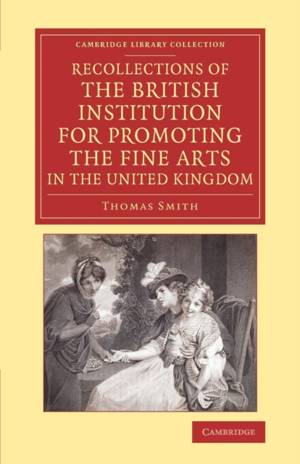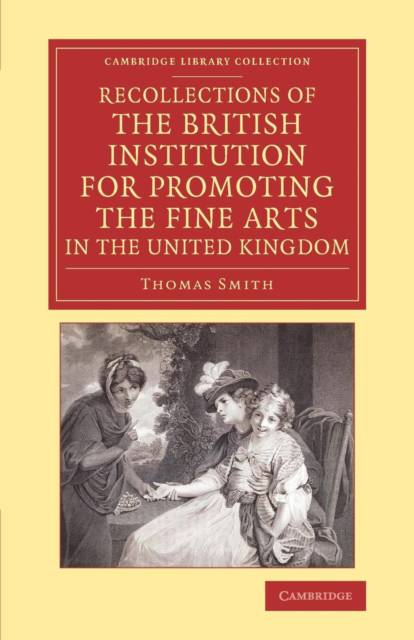
Door een staking bij bpost kan je online bestelling op dit moment iets langer onderweg zijn dan voorzien. Dringend iets nodig? Onze winkels ontvangen jou met open armen!
- Afhalen na 1 uur in een winkel met voorraad
- Gratis thuislevering in België vanaf € 30
- Ruim aanbod met 7 miljoen producten
Door een staking bij bpost kan je online bestelling op dit moment iets langer onderweg zijn dan voorzien. Dringend iets nodig? Onze winkels ontvangen jou met open armen!
- Afhalen na 1 uur in een winkel met voorraad
- Gratis thuislevering in België vanaf € 30
- Ruim aanbod met 7 miljoen producten
Zoeken
Recollections of the British Institution for Promoting the Fine Arts in the United Kingdom
With Some Account of the Means Employed for That Purpose;
Thomas Smith
€ 61,45
+ 122 punten
Omschrijving
The British Institution for Promoting the Fine Arts in the United Kingdom was founded as a private art gallery in 1805, and took over the lease of publisher John Boydell's Shakespeare Gallery in Pall Mall, London. Its rich and noble subscribers (including the Prince of Wales, later George IV) patronised exhibitions of contemporary works, and also lent items for shows of Old Masters. The Institution also took in art students, and was a very popular public attraction in London: Jane Austen was among the many visitors from around the country. This 1860 book by Thomas Smith, a London historian, describes the founding and development of the Institution, with notices of its regular exhibitions and of special events such as the memorial dinner for Sir Joshua Reynolds. This is a fascinating account of a popular gallery in the first half of the nineteenth century, and of the tastes of its patrons and visitors.
Specificaties
Betrokkenen
- Auteur(s):
- Uitgeverij:
Inhoud
- Aantal bladzijden:
- 248
- Taal:
- Engels
- Reeks:
Eigenschappen
- Productcode (EAN):
- 9781108074544
- Verschijningsdatum:
- 17/07/2014
- Uitvoering:
- Paperback
- Formaat:
- Trade paperback (VS)
- Afmetingen:
- 140 mm x 216 mm
- Gewicht:
- 317 g

Alleen bij Standaard Boekhandel
+ 122 punten op je klantenkaart van Standaard Boekhandel
Beoordelingen
We publiceren alleen reviews die voldoen aan de voorwaarden voor reviews. Bekijk onze voorwaarden voor reviews.











